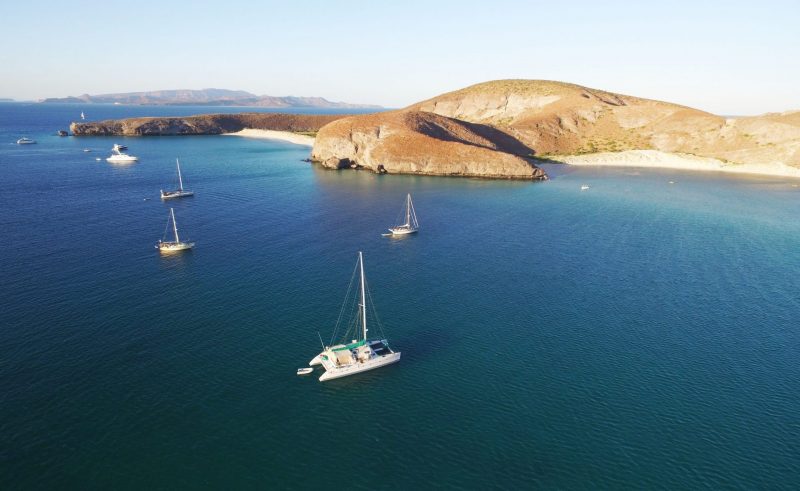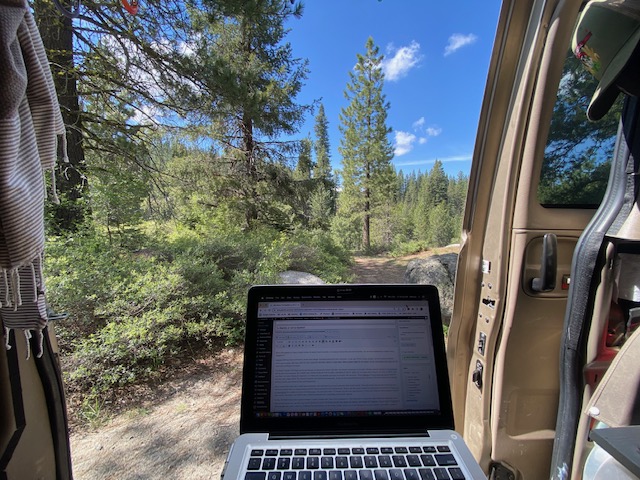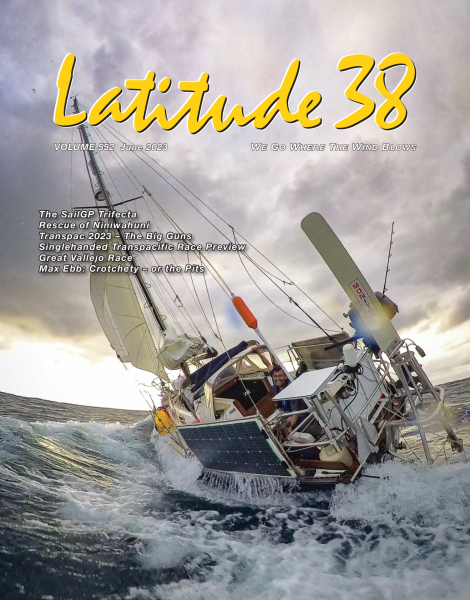
To Starlink or Not To Starlink?
This is the question on many cruisers’ minds. No doubt there are benefits to increased connectivity and communication. But are there drawbacks to always being plugged in?
Starlink’s offerings have continued to evolve and change, including increasing prices and plan structures. A year ago the RV version, Roam, had just become available, and was a quicker alternative than the long wait list for the home version in most areas. Many cruisers opted for this version, but as more sailors have done so, the plans have continued to change.
The Grand Poobah of the Baja Ha-Ha and founder of Latitude 38, Richard Spindler, has shared extensively on the topic. Richard recently wrote on his Facebook page that his plan was increased. “MY LATEST BILL FROM STARLINK FOR GLOBAL ROAMING IS ABOUT $260 US. I’ve used mine in Mexico, St. Kitts, St. Barth, and now Paris. As I use it heavily for business, I’m thrilled with the reliability and have no problem with the price.” Chuck Skewes of Ullman Sails San Diego reported from last year’s Baja Ha-Ha, “The amount of people with Starlink was awesome. It was the best documented as we go, Ha-Ha ever. We were seeing lots of people posting pictures and stories as they were happening.”

Many cruisers who have yet to retire have welcomed it with open arms as a way to have the best of both worlds. And there are others who fear the wild places are becoming spoiled with an overabundance of Wi-Fi and connectivity to the outside world. There is also the issue of safety due to being more connected. On March 14 SV Raindancer hit a whale en route to the Marquesas. The boat sank within 15 minutes, but the crew was rescued 10 hours later. Multiple communication devices were used in the rescue, but Starlink was credited as instrumental in facilitating a communication network.

For this writer, Starlink has been a game changer, a game changer that I had a lot of resistance to. The initial price of equipment, about $700 with shipping, was a huge investment. Last fall I had moved aboard my boat in the Delta. With very spotty cell service and limited Wi-Fi options, I found myself struggling to efficiently get work done. I tried three or four different hot-spot devices, all with similar subpar results, and finally decided to try out Starlink. This winter, I spent five months chasing snow across the Western US in my van, all while remaining gainfully employed thanks to Starlink. Currently I’m writing this from deep within El Dorado National Forest, a beautiful place without any connectivity.

Starlink has been great, but not without challenges. In May I had a cord failure, and though Starlink replaced the cord without charge it took a very long time for their support department to respond to the ticket. There is also the issue of price and changing my plans. Starlink has added many plans and pricing structures in the last year, including priority options for busy times, at an increased cost. My Roam plan started at $130/mo. and recently was raised to $150/mo. We have heard from a few cruisers that their plan was switched to Maritime once they were a certain distance from shore, and they are either paying per gigabyte use or for the $250/mo. maritime plan.

As a digital nomad, I feel it is still worth the cost, its being my sole form of Wi-Fi, allowing me to work from almost anywhere, but I do have concerns about price changes in the future. Now we would like to throw the question to our community. What are your thoughts on Starlink? Has it worked for you while cruising? Has your plan been changed? Send your Starlink thoughts to [email protected].

Starlink was a game changer for S/V Malolo on last year’s Haha. It allowed everyone to stay in contact with family and friends, and facilitated one of our crew to do live Instagram and FB to her million followers. We are now sailing north up the Baja Peninsula to Marina del Rey which is deserted at this time of year where getting support is hard to do otherwise.
Gone are the days when our cruising plans were dictated by connectivity to wifi and/or cell data. We are able to explore more places and remain working at the same time. It’s the best of both worlds.
I recently did a delivery from West Palm Beach, FL up to Wilmington, NC on a Starlink-equipped catamaran. Incredible! Reliable, consistent, fast-as-heck; it was like being at home. I’m definitely equipping my new boat with Starlink- absolutely. To those who argue they are trying to get away from being connected, I say: “Get over it and get real. This is 2023, not 1823.”
What will be is not necessarily what is now. If you can, I’d wait to see what the mercurial E. Musk plans to do and what he does do.
Few seem to be asking the question “Do I really NEED this?” I would recommend living without it as it gives your mind a chance to open up to the real world. New freedoms, new possibilities. See Sightings in Lat38 March 2023.
Starlink is a big topic in many cruising forums. As mentioned in the article Starlink can change your plans at any time including turning your plan off if you are outside of the area your plan is license for. Which cruiser find themselves in quickly if they have a U.S. plan and leave the US territorial waters. So be aware. A marine electronic specialist in Europe also pointed out that on route Starlink may not work reliably due to the motion of the boat I heard that confirmed by cruisers who sailed to the French Polynesian Islands. Unless you get the expensive worldwide marine license and the equipment for it you should keep an IridiumGo device on board for emergency comms and critical weather updates.
Another interesting issue that is regularly pointed out in sailing forums is the fact that the license other than global license is bound to the country territory it is purchase for. This is a problem not with Starlink but the different countries who all want to collect a fee for each operating device. That one I was not able to confirm but if you plan to go cruising into other countries check on this before you find your system turned off.
A shore, at anchor, or in port in the US territory there is no doubt Starlink is the winner. It just leaves the question whether when you go cruising you want to break that last touch of freedom (with out connectivity to the world for a while).
As a liveaboard, one of the first things that really surprised me was how hard it was to get high quality broadband internet at the dock. I’ve been in three marinas in the East Bay, and the options most home users rely on (fiber and cable) were not an option at any of them. DSL relies on good, short runs of copper cable from the hub, so scratch that. Cellular coverage in the marinas I’ve been in has been fine on shore, but terrible on the boat, perhaps due to all the masts around us. That leaves microwave and satellite. I had a microwave receiver for two years and was relatively happy with it, despite a high price/bandwidth ratio. I switched to Starlink about a year ago, spending over $2k since then in hardware, mounting, and monthly fees. And while the speed/bandwidth is better than microwave, I just switched back because the Starlink simply wasn’t reliable enough to work from the boat on a regular basis. I could only occasionally Zoom for an hour without incident. More often than not I would experience freezing or complete disconnection from almost every Zoom meeting. Admittedly, teleconferencing protocols are extremely reliant on low latency and low jitter, so regular web browsing and Netflix watching were fine. But I cannot justify spending $120/mo on internet that I can’t use for an important Zoom call.
I do believe Starlink is a game-changer for staying connected in remote areas, but as others have noted, in this age of reliable safety devices such as EPIRBs and Garmin inReaches (even my iPhone can send an emergency text via Satellite), what do we gain from Starlink other than bandwidth? Are our anchorages and remote areas better or worse off with a bunch of tech bros using that bandwidth to work remotely out of them? I’d argue worse.